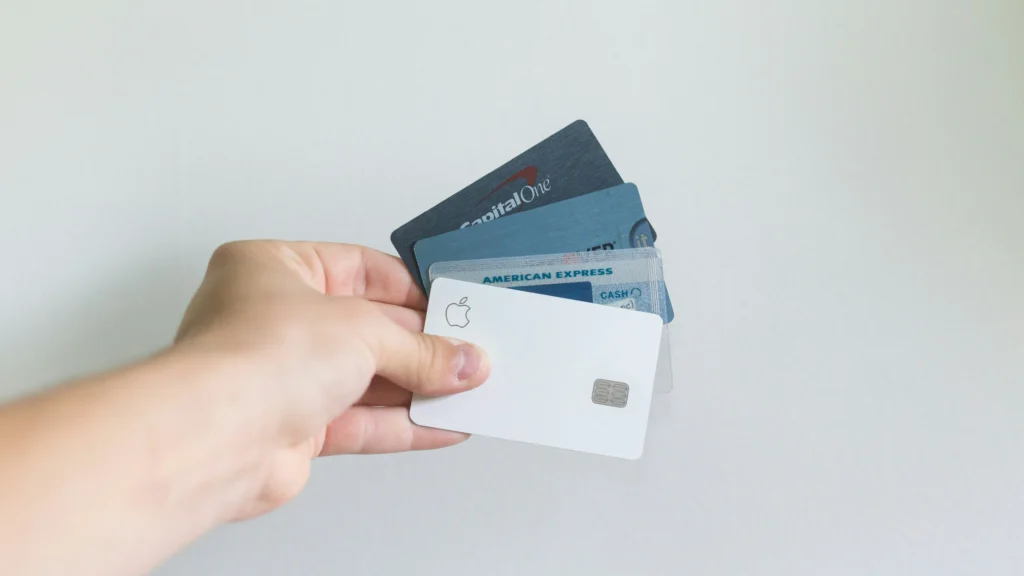In an ideal world, a customer would make a payment and the value of their purchase would immediately land in your business account. It would be useful, wouldn’t it? Unfortunately, we don’t live in an ideal world, and there are several steps involved in payment processing before it reaches the settlement stage. One such stage is a temporary authorization hold.
While beneficial in some ways, there are problems with this step, particularly for customers. Most temporary holds last between one to seven working days, and while it should clear once the payment is settled, it reduces cash flow and causes uncertainty in the meantime. It’s also a lesser-known part of the whole payment process. Yet, it’s one that needs to be understood fully to optimize your customer experience, reduce churn rates, and avoid losses over time.
TL;DR
- Many businesses lose potential revenue due to poor temporary authorization hold management, creating unnecessary customer service costs and abandoned transactions.
- Different card types have vastly different hold durations – premium cards often hold for seven days while basic debit cards may release within 24 hours.
- Advanced merchants use graduated hold strategies and real-time communication systems to reduce support calls.
- High-risk merchants face authorization holds lasting 30+ days, requiring specialized cash flow management and rolling authorization techniques.
- Strategic settlement timing and same-day processing can reduce hold windows to just 2-4 hours for optimized merchants.
The Merchant's Blind Spot in Authorization Architecture
It’s easy to simply focus on completed transactions, and that makes sense. Yet, missing the pre-authorization stage is a mistake. This is the part that can cause cash flow problems, while also causing a world of confusion for your customers if it’s not handled correctly.
In many ways, this part of the payment processing journey is invisible, but it can decide whether your customers are satisfied or not. If not, they may abandon their purchase before the sale is even finalized.
Authorization Hold Mechanics Beyond Basic Definitions
Before we go further, let’s rewind: What is a temporary hold on a credit card or debit card?
When a customer makes a purchase, a temporary hold is put onto their account to check that they have enough money to cover the sale. It reduces the amount of cash available, but doesn’t actually charge it yet. Once the hold is over, either the money is reduced from the actual account balance and the transaction is complete, or it recredits if the transaction fails.
This can often show as ‘pending’ on a banking app or bank statement. Yet, the background to this is quite complex and involves several banking parties. Each has its own hold durations and protocols for release, which can make the process frustrating and quite unpredictable.
It’s not only the customer that is affected either. If you regularly deal with high-risk transactions, temporary hold authorization means you may face extended periods with affected cash flow. The longer it goes on, the more frustrated your customers will become, potentially leading to lost custom in the future.
Bank-Specific Hold Variations
The most obvious question is: how long does a temporary hold last? We’ve mentioned that it can be anything from one to seven working days, but it’s important to understand that different banks have their own regulations.
The table below gives some insights into the amount of time you can expect a hold to last.
Card Type | Typical Hold Duration | Release Factors |
Premium Credit Cards | 5-7 days | Issuer algorithms, fraud scoring |
Standard Credit Cards | 2-5 days | Network processing, merchant category |
Debit Cards (PIN) | 1-2 days | Immediate fund verification |
Debit Cards (Non-PIN) | 3-10 days | Credit network processing |
Corporate Cards | 3-5 days | Company policies, spending limits |
Prepaid Cards | 1-3 days | Load verification, merchant type |
MCC-Driven Hold Algorithms
Another factor that affects how long a temporary hold lasts is your merchant category code, or MCC. In this case, it doesn’t matter what the transaction amount is, the code will determine the amount of time. For instance, car rental companies, hotels, and gas stations face longer hold periods because of their classification. On the other hand, retail transactions tend to be shorter.
The Emotional Economics of Temporary Holds
It’s normal for customers to face a certain amount of anxiety if they see pending charges on their accounts. Some people may not understand what they are, while others may wonder why they’re not clearing after a day or two. This emotional response can lead to specific actions, such as a duplicated purchase or an abandoned cart. Another result can be making customer service calls that work out expensive, often costing more than the actual transaction itself.
Payment Processor Hold Optimization Technologies
Many payment processors use algorithms and decision engines to minimize authorization holds while still maintaining security standards. Digging deeper into these systems can give you an advantage as it allows you to choose a processor that works with your customer experience aims.
Dynamic Hold Duration Algorithms
Payment processors can analyze transaction patterns, customer behaviors, and business risk profiles in real-time. From this, they can automatically adjust hold durations depending on the information received. This approach creates a balance between optimizing the customer experience and fraud protection.

A temporary hold on credit card transactions can be frustrating and confusing for customers.
AI-Driven Hold Optimization
Machine learning is a branch of AI, and it’s extremely sophisticated. In this situation, it can predict the best hold duration based on countles variables, such as time of day, customer location, and transaction patterns. It does all of this within the blink of an eye, creating an accurate and efficient process.
Over time, these systems learn and improve, so the more it’s used, the more accurate the results.
Inter-Network Hold Synchronization
Some payment processors also coordinate their actions with card networks to create a consistent hold experience across several payment methods. This means there is less confusion between Mastercard, Visa, and other major networks.
Without this, customers may experience completely different hold times between networks, creating confusion about how your business works.
Vertical-Specific Hold Optimization Approaches
No one business is the same as any other, and there are certain industries that face greater temporary authorization hold challenges than others. For instance, subscription services often have to deal with recurring authorization complications. In general, high-risk merchants often face longer hold periods, and all of this requires a careful and specific approach.
At PayCompass, we understand the payment processing challenges you face as a high-risk business. That’s why we’ve designed our high-risk merchant accounts to counteract these issues and give you a more streamlined experience.
Extended Hold Management for High-Risk Merchants
Many high-risk businesses face holds that can, at times, last up to 30 days. Of course, this is less than ideal, and it requires careful cash flow management and communication strategies to smooth any confusion with your customers.
Staggered Authorization Techniques
One way to manage an extended temporary hold on credit card transactions is to use a rolling authorization strategy. This means you capture small amounts over time to minimize the impact of a hold, while still maintaining overall security. In this way, you’re distributing the impact across several smaller holds which are far less noticeable.
Yet, this technique does require a lot of careful planning, particularly in timing. You must ensure that you capture the whole amount before any single authorization expires. Automated systems can help you manage this more effectively and reduce the chance of error.
Recurring Authorization Hold Patterns
Let’s return to subscription-based businesses for a moment. These often have to navigate complicated hold situations where failed recurring payments create a domino effect. A payment failure can, in theory, block a customer account across several services. This causes problems far beyond your one situation, as it may prevent customers from making purchases with anyone else.
Of course, this is extremely damaging to your relationship, not only now but in the future.
Automated Hold Release Protocols
Many subscription merchants make their way through this situation by using automated systems that immediately release failed payment holds. At the same time, they give alternative payment options to re-try the payment. This approach is useful because it minimizes disruption for the customer, and doesn’t affect your relationship despite the payment failure.
Proactive Hold Management and Customer Experience Design

A temporary authorization hold can frustrate your customers, pushing them away from your business.
With every challenge comes the chance to build something new, and that’s what many leading merchants attempt to do. Taking a temporary authorization hold and turning into a trust-building opportunity takes effort, but it’s entirely possible. It means changing your mindset from reactive to proactive, alongside customer communication and education.
Pre-Transaction Hold Education
Educating your customers about any expected holds before they happen is a strong route forward. This is where you can be proactive and set realistic expectations. From that, you’re reducing any post-transaction confusion, and any associated support calls.
Contextual Hold Explanations
Customer communication and education works best when it’s tailored to their specific situation. Advanced systems can help to personalize hold durations based on card type, issuing bank, and the characteristics of the transaction itself. This way, there’s better transparency, which reduces anxiety.
The checklist below has some useful tips on how to navigate this situation:
Hold Management Checklist for Merchants:
- ☐ Identify your MCC-specific hold requirements
- ☐ Document typical hold durations for each card type you accept
- ☐ Create customer education materials for common hold scenarios
- ☐ Implement pre-transaction hold notifications
- ☐ Set up automated hold release protocols
- ☐ Train customer service team on hold explanation techniques
- ☐ Monitor hold-related support ticket volume
- ☐ Track hold-related customer satisfaction metrics
- ☐ Review and update hold policies quarterly
- ☐ Test hold communication effectiveness regularly
Payment Method Hold Differentiation Strategies
A temporary hold on debit card transactions can be different to credit cards, and it can vary from network to network. It’s a good idea to learn more about these differences, as it will help you optimize your conversion rates and cut down on customer confusion.
Immediate Account Deduction vs. Credit Line Reservation
What is a temporary hold on debit card transactions? It’s a situation that immediately reduces available funds, potentially pushing a customer into their overdraft and limiting their daily spending abilities. On the other hand, credit card holds reduce credit limits but don’t generate an interest charge. However, it does impact on their ability to make payments and spend generally.
From a merchant point of view, there are broader implications to consider, particularly regarding merchant account limits. These limits can affect both hold duration and customer experience across different payment methods.
Real Balance vs. Available Balance Management
The problem with debit card holds is that they can trigger overdraft fees on later purchases, even if the customer believes they have enough money in their account. This is because the available balance is reduced without immediately appearing on a statement. From this, it’s easy for the customer to be confused about their account status.
To illustrate this point further, the table below gives some key insights into different payment methods and the impact of temporary holds.
Payment Method | Balance Impact | Hold Duration | Customer Risk |
Debit Card (PIN) | Immediate deduction | 1-2 days | Low overdraft risk |
Debit Card (No PIN) | Available balance reduced | 3-10 days | High overdraft risk |
Credit Card | Available credit reduced | 2-8 days | Credit limit concerns |
Premium Credit | Available credit reduced | 3-7 days | Minimal customer impact |
Corporate Card | Available credit reduced | 3-5 days | Policy compliance issues |
Prepaid Card | Balance reserved | 1-3 days | Spending limit reached |
Banking Day Impact on Debit Releases
It’s also important to consider the day of the week when the transaction was initiated. If a debit card hold begins on a Friday, it usually continues throughout the weekend because of regular banking schedules. If it’s a credit card, this might be released during the weekend depending on the issuer’s algorithms. Of course, this creates an inconsistent experience for customers, who may be confused while their credit card holds have cleared but not their debit card ones.

Wondering how long it takes for a credit card hold to be released leads to stress for customers.
Merchant-Controlled Hold Duration Strategies
It’s possible to influence hold release timing as a merchant. This is done through strategic transaction processing choices, processor optimization techniques, and settlement timing manipulation. However, all of these strategies are in-depth and need a careful understanding of payment processing as a whole.
Accelerated Capture Processing
If you process several settlements throughout a day, you can work to reduce settlement windows by a large amount. In some cases, this can be within just two to four hours of the first authorization. To do this, you need to understand strategic settlement timing.
Yet, the downside is the potential for higher processing costs. Of course, this may pay for itself with enhanced customer loyalty simply by improving their overall experience. It’s something to weigh up in terms of pros and cons. Also, to achieve a fast release window, there needs to be careful coordination between your settlement timing and the batch processing schedule your processor uses. If you get this timing just right, you’ll get faster results.
Of course, this strategy won’t work for all businesses. It’s best for those with predictable transaction patterns. It also requires the ability to manage several settlement processes within one day without any errors.
Settlement Timing Strategy
It’s also a good idea to time your daily settlement batches with optimal card network processing times. This can reduce hold durations by anything up to 12 hours when compared with regular schedules.
Do some research into the optimal time for the card networks you use. This is when settlements are handled most efficiently and faster. Then, time your batches to align with that window. You’ll notice that holds are removed much faster because you’re avoiding processing delays that usually happen during peak processing times.
It’s tricky to master, as it requires careful knowledge of your card network’s optimal windows, but it does save on time and money.
Final Thoughts
It’s easy to assume that temporary authorization holds are just something you need to accept. Yet, you have more control over them than you realize. With careful strategic moves and deep knowledge of how they work, you can reduce the amount of time a temporary hold on debit card purchases lasts. You can do the same thing for credit card holds too. Of course, your customers will certainly appreciate this, as temporary holds have an effect on their cash flow in the short-term.
When customers don’t understand why temporary holds aren’t moving, they become frustrated. They might attempt the same purchase again, or call a costly customer service line. All of this reduces the customer experience and makes it more likely that they will abandon their purchase and go to one of your competitors instead.
For these reasons, it’s important to learn more about these holds, and understand how long it takes for a credit card hold to be released. Then you can get to work reducing it and helping your customers feel more secure in their business with you.
It sounds complicated, but PayCompass can help you. Our easy, all-in-one payment processing platform helps to cut out the complications and simplify the effect of temporary holds. We keep a careful balance between holding times, experience, and security and compliance. All of this adds to your peace of mind while ensuring a smoother experience for you and your customers.
So, if you’re ready to take authorization holds and turn them into a less complicated situation, contact us today. Let’s explore how we can streamline your payment processing and boost your overall customer experience.





